When French woman Mlle Serpollet demonstrated a Gladiator tricycle in Adelaide in May 1899, South Australians saw their first motorised vehicle. This was soon followed by the locally built Shearer steam car, which made its first run down the main street of the River Murray town of Mannum on 5 June 1899. These vehicles and the others that followed were seen as toys for rich sportsmen and tinkerers, but their practical use quickly became apparent.
Adopting and adapting to motor vehicles
Being flat, dry and relatively prosperous, with a limited rail network, South Australia took up the motor car quicker than other states. Even so, there was initially some antagonism. The noise and smell of car engines scared horses, which were then the main means of transport. At speed, cars threw up clouds of dust. However the advantages of motor vehicles were rapidly appreciated by farmers (in reducing isolation) and medical practitioners (for speedy house calls). Australia’s first registration and licensing system was implemented in South Australia during 1906 and by 1910 some 1350 cars (and a larger number of motor cycles) were registered.
By 1921 there were 24 motor vehicles (excluding motorcycles) per 1000 South Australians (Victoria with 16 per 1000 was next in Australia). American cars such as the Model T Ford were now more practical and cheaper but remained the preserve of the affluent. Motor cycles with sidecars were common. The motor vehicle’s general impact on South Australians began in the 1920s. In Adelaide motor buses began to compete with electric trams and steam trains for passengers. For country people buses such as Sylvia Birdseye’s Port Lincoln–Adelaide service made the capital city more accessible. Light trucks delivered goods and materials throughout the state. The motor body-building firms Holden’s and TJ Richards & Sons helped develop the largest vehicle industry in the nation.
From the 1950s
While by 1939 around one in four South Australian families had a car – now likely to be a sedan rather than the canvas-roofed tourer of previous decades – the Great Depression and the Second World War reduced the momentum of car ownership. Not until the 1950s did car ownership become a reality rather than a dream for most families. In 1948 there were 162 motor vehicles per 1000 South Australians, and by 1964 there were 360; indeed, until the mid 1960s South Australia had the highest per capita car ownership in Australia. The Sunday drive became a popular pastime.
Increased car ownership brought pressure on governments for better roads. Although the world’s first use of top-dressed sealed macadam was near Willunga on Fleurieu Peninsula in 1924, most roads outside Adelaide were unsealed until after the Second World War. The growth of a national road transport industry further increased pressure to improve South Australian highways.
Impact on planning
Changes were made to accommodate the motor vehicle. Trams, the bane of Adelaide motorists, were removed from Adelaide streets in 1958 (except for the Glenelg line). The first drive-in theatre (popular with families and courting couples for the next 30 years) and the state’s first motel were opened in 1956. The Metropolitan Adelaide Transport Study (MATS Plan) of 1968 sought to carve a series of freeways across Adelaide to improve vehicle access to the city from its burgeoning suburbs. Cost and public opposition halted its implementation.
On 25 July 1901 the Advertiser could boast that ‘Adelaide now possesses four automobiles, or as they are properly called, motor cars or horseless carriages’. A century on the impact of the motor vehicle on South Australia is dramatic. In Adelaide it has stimulated urban sprawl, enabling the growth of suburbs that have almost total dependence on vehicular access. In country areas the motor vehicle has reduced isolation yet encouraged the diminution of small centres by facilitating access to larger towns. South Australia’s largest manufacturing sector is the vehicle-building industry. However, in the last decades of the twentieth century concerns over pollution and the use of oil have led to increasing debate over the role of the motor vehicle in South Australia. Calls for increased use of public transport appear to have been in vain – in 2001 South Australians drove 1 840 169 motor vehicles and 26 461 motor bikes.


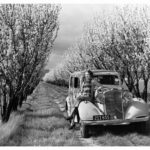

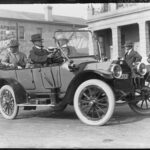
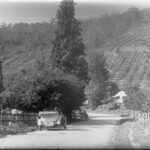
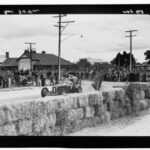
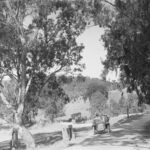
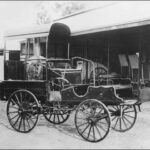
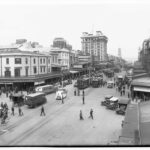
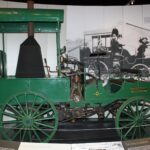
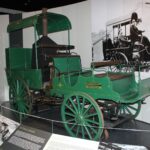
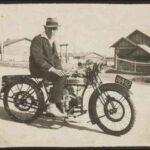
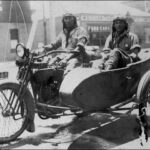
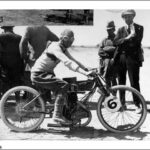
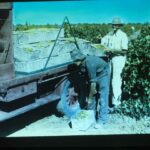
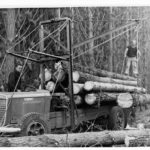


Comments
7 responses to “Motor Vehicles”
My grandmother owned a Stoewer in 1910. Being quite unusual for a woman at that time, can you tell me the first female, and date, to own a vehicle in South Australia please?
That’s a tough one Jillian, I’ll see if our friends at the National Motor Museum have any idea. It may be possible to find out from official registration records, but of course if a car was registered by a second party it may be impossible to prove completely.
I haven’t been able to find the answer Jillian, but you can search digitised registrations here: http://www.familytreeoz.com/sa-car-registrations-1906-1927.html
How difficult would it be to find information on a BMC dealership that operated in the 1960`s in Medindie Sth Australia, called JN Taylor& sons.
Reason, trying to get info on Morris Cooper S 1966 that I bought new back then. Unfortunately I have lost all paper work for it.
Can you help, with any information.
Hi Alwyn, are you after details specifically on that dearlership and car, or would information on that model do? Our colleagues at the National Motor Museum might be able to assist https://motor.history.sa.gov.au/contact/
Hi from Bendigo, Just wondering if I could get the details on SA plate 27155 from an Australian Six please? A list I have indicates January 1924 registration, but I now can’t access the date on Trove. Many thanks, Vin
Hi Vin,
We cannot find a record for SA 27155 but there is records for SA 27120 which was a Rolls Royce registered in 1924 and SA 27176 which was a Dodge Brothers registered in 1924.
So the January 1924 could be correct, it certainly was a 1924 plate.
If you need more information, our colleagues at the National Motor Museum might be able to assist further: https://motor.history.sa.gov.au/contact/